Sheet Anchor, the last village in East Canje before reaching New Amsterdam has a population of over 4,500 with a section under the Canje Bridge that many people do not know exists.
About 1,500 persons reside ‘Under the Bridge,’ as the area is commonly referred to, and the main form of livelihood there is fishing. Residents used to be the main supplier of fish in Berbice.
There are two grocery shops in the area, a small snackette and two vegetable stalls.
A resident who is engaged in boat building declined to speak to this newspaper when approached. Some of the other residents are employed as nurses, teachers, and labourers. There is also a cosmetologist.
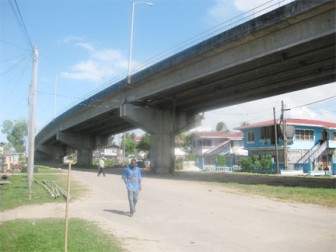 The children attend the Sheet Anchor Nursery and Fort Ordnance Primary schools in the village. After sitting the National Grade Six Assessments they move on to secondary schools in New Amsterdam and the Corentyne. Upon completion of their secondary education, some of the students further their education at the New Amsterdam Technical Institute, the GuySuCo apprentice school at Port Mourant or the University of Guyana (UG) at Tain or Turkeyen.
The children attend the Sheet Anchor Nursery and Fort Ordnance Primary schools in the village. After sitting the National Grade Six Assessments they move on to secondary schools in New Amsterdam and the Corentyne. Upon completion of their secondary education, some of the students further their education at the New Amsterdam Technical Institute, the GuySuCo apprentice school at Port Mourant or the University of Guyana (UG) at Tain or Turkeyen.
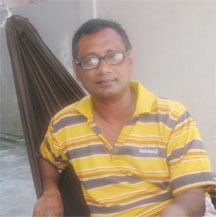 Residents have easy access to health care at the New Amsterdam Hospital, which is located a short distance away from the Canje Bridge at Fort Canje.
Residents have easy access to health care at the New Amsterdam Hospital, which is located a short distance away from the Canje Bridge at Fort Canje.
The popular A Ally & Sons General Store also has a branch – A Ally & Sons Showroom – by the roadside. The company also has a warehouse in the village where items for all the other branches are stocked. It is also establishing a bond nearby. The store sells a variety of hardware, electrical and household items and provides employment for persons in and around the village.
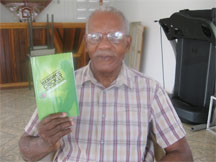
Along the roadside too, is a meat centre, D Arjune & Sons – where plucked chicken and duck are sold in wholesale and retail quantities. The birds are reared at the Arjunes’ farm located at Fyrish, while another branch is located at Belvedere.
Deomattie Arjune told the Sunday Stabroek that they also purchase eggs from other poultry farmers to sell.
Other businesses located nearby are Western Union and Bill Express, a dental clinic and a medical laboratory.
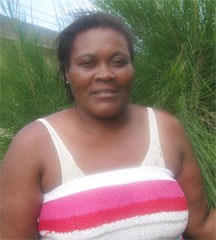
A resident, Jilian Lord, 50, runs the Stalma’s Internet Café, Beer Garden & DVD Club for a relative who resides overseas. She told this publication that the Fort Ordnance Scheme is situated at the back of the village. A market is located close to the scheme, but Lord said that it is “rundown” and almost abandoned with “just about two persons selling there now.” She used to be a vendor at the market but quit a few years ago.
Mursaline Bacchus
Lawyer, Mursaline Bacchus, 69, said the village is “easy-going” with a lot of the residents being fishermen and estate workers. He recalled that while growing up there “everybody used to live like one big happy family.” The village is “evenly divided with both Indians and Africans.”
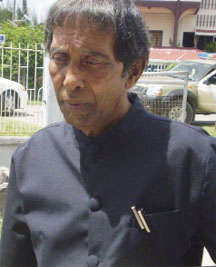
Bacchus attended the Sheet Anchor Anglican Primary and then the Berbice High Night School – for persons who couldn’t enter the day school. He said that “in those days we had to pay” and he took a job as a lawyer’s clerk. He wrote the GCE exams and then studied law at UG for two years. When the programme started at the University of the West Indies at Cave Hill, Barbados in 1970, he said he went there to complete his studies.
He worked “two stints as a magistrate” – six months in Georgetown in 1981 and four months in Berbice in 1990: “I consider that my national service,” he commented.

He practises both in Berbice and Georgetown. His daughter, Patricia has followed in his footsteps to become a lawyer while his youngest son is a final year medical student. He was the last of six siblings and reminisced that “cricket used to be my major activity.” Recently Bacchus presented the petition for a young lawyer from the village, Charlyn Artiga when she was admitted to the bar by Chief Justice Ian Chang. Artiga attended the New Amsterdam Multilateral and then moved to President’s College where she wrote the CAPE exams.
‘A Time in our History – Berbice Cricket – from 1979 to 2010’

That is the name of a book written by Mortimer George, 68, who served in the Guyana Police Force from 1962 until 1983 when he migrated to the United States of America. He also spent almost all of that time with the Berbice Cricket Board (BCB) “serving in numerous positions.” From 1976 he was named honorary secretary. In 1987 the board honoured him with life membership for his long and dedicated service, which they felt was “of exceptionally high quality.”
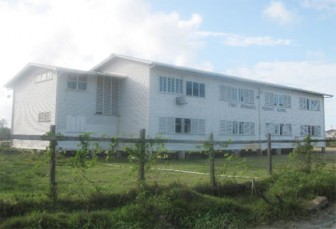
The idea of the book came about after the passing of the then president, Leslie Amsterdam. He along with two other life members of the board, Lennox Phillips and Ancel Hazel and former president, Shawn Razack, were asked to “historically record the activities of the board.”
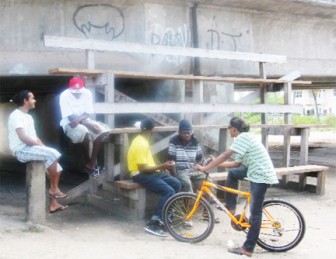
Since he was retired he took on the task of writing the book, which he said is “historical in content and is extremely informative, instructive and unique in the fact that it combines the performance of the administration” and the star players they produced. Copies of the book, he said can be obtained online at: www.lulu.com [then type in his name in the search bar]. It is also available at the BCB or persons can contact him on 617-3946.

George, who was born in Sheet Anchor, became involved in cricket since his primary school days. He formed the Sheet Anchor Youth Cricket Club at age 16, and was appointed vice-captain, honorary secretary, treasurer, selector and executive member all at once.
At age 22, he attended the first meeting with the board – “at a time when it was at its lowest ebb and persons used to refer to it as cardboard. We had to meet, confrontand overcome many challenges.”
He recalled that during that time “the Guyana Cricket Board (GCB) only accommodated two representatives from the BCB, and we had to fight for players to be selected. It was the type of fight that was led by Leslie Amsterdam, a victim of exclusion from the Guyana side.”
According to George, Amsterdam scored the most runs and had the highest average of above 56 runs per innings but he was not selected. “That motivated him to champion the fight” and between 1957 and 1959 four players from Port Mourant made their debut in the West Indies team.
George’s dedication to the board continued even after he migrated to the US and he raised funds on two occasions for it. He received the prestigious Hero’s Award from the board in 2008, while the Young Warriors Cricket Club of East Canje gave him similar honours in 2005.
Life under the
Canje Bridge
Close to the Canje Creek are large-scale business establishments, including an asphalt plant owned by Dipcon Construction Company and wharfs for the stockpiling of hardware materials – sand, stone and cement.
Those businesses are owned by David Armogan, HN ‘Chinee’ Sugrim and Toolsie Persaud Ltd. Employment is provided for persons but not many come from the area, residents observed.
Around 1.30 pm Sunil Singh, 21, who has been “working along” in the fishing business with his brother, Rohan Ramlakan, 32, for the past 12 years was returning home from the sea with three small sharks in his hands. He was planning to dry them and “mix it with any greens.” Singh who attended school up to first form was in a hurry to “set up meh engine.” He was planning to return to sea later that evening where he would spend about five hours.
A group of other fishermen was sitting close to where their boats were moored at the side of the creek, but did not want to have their photos taken. They spoke anonymously about some of the problems they face in the industry.
The men who operate small boats up to the mouth of the Berbice River said they “do Chinese seine fishing.” They go out during the high tide and work in the falling tide and would catch mostly small fish and “fat” shrimp.
The fishers would then vend their catch at the Rose Hall market. Their grouse is that thick clumps of grass that are cleared from way up in the Canje Creek during the rainy season float downstream and become entangled in their seines and fish pens and cause them to be damaged. They were also concerned that CGX has taken over “the whole waterfront” where they had set up their fish pens. They have had to move farther out to the “mud flat. We get a small amount of fish there and we have to contend.”
According to the men, when the company starts drilling for oil they may not be able to operate there as well, and feel they should be compensated.
Another group of young men were “chilling” on a bench at the side of the bridge when a dog approached and barked at this reporter. They started to laugh and chided the dog by its name; ‘Not Nice’ to leave me alone. The dog then seemed to get a little more comfortable with my presence.
One of the youths, Reynolds, a student of the University of Guyana, Turkeyen campus, was on vacation at the time. He said he enjoys his time in the area as the people are very friendly and helpful. He noted too that while some persons may be out of permanent jobs there is always something for them to do to earn some money. “People are sheltered and fed right under here,” he pointed out.
Jermaine who was also with the group works in the interior as an engineer on a dredge.
“I enjoy working on the dredge,” he said. “But the bush is not nice; it’s too cold. Sometimes we would not see the sun until after 8 am because of the dew.”
Another youth, Kevin, works with the Regional Democratic Council and is in charge of cleaning the bridge. He also switches on the lights in the evening and takes them off at 6 am the following day.
Lucinda Bruce who moved to the area 10 years ago from Winkle Road, New Amsterdam, said she likes her present location more. “The people are nice here; I never had any problem with anyone.” Her only concern is that “we are not getting drainage. All over is blocked up and the water has nowhere to run when the rain fall. We have to pay money to get it [drainage] done.” Another resident complained that bush has taken over the drainage trench where the koker is located and needs to be cleared.
A vegetable vendor, Depa Seidal, 44 was plying her trade just at the approach of the bottom of the bridge when this newspaper visited. A single parent, she was separated from her husband five years ago and “had no choice but to start vending.” She lived here “all my life and I enjoy my life here. The people here are quite friendly and hospitable. You can always get a helping hand from the young men.”
This was not the view of a resident from out of that section though. He commented that “the village is okay but only under the bridge there is a different scenario. Some of the young men do not work so you can expect a lot of things happening.”
Emanuel Mohabir, 50, who grew up “under the bridge” strongly defended the area from “what people may have told you about under here. It is not a slum as people believe.”
He said there were always negative comments about that section but people have “become more educated now and have uplifted themselves. Everybody is trying to make a better life. Every young kid is in school.” Mohabir admitted that “it used to be bad [years ago] but it is better now, yet some people portray the image as though it is a bad neighbourhood.”
He pointed out that some of the men used to drink, fight, curse and beat their wives “but that don’t happen [so much] any more. Some of the young people who are not getting jobs would still abuse alcohol and indulge in petty thieving but the decent youths would stop them.”
He worked at the Rose Hall Estate as a fitter machinist after completing training at the apprentice school. He is now employed with Carnival Cruise Line and said “basically it provides a better living for me and my family.”
He returned home after his son, Julian Mohabir was killed in an accident on the Canje Bridge last month. Emphasizing how helpful the youths are, he said just after his son’s death “they came together and built a tent and cleaned up all over.”
Persons first started to squat in the area and they eventually obtained lease for the land from the owners. He claimed that the area was a “forgotten part of Guyana.
Nothing has been done to uplift here.” The streets are in a deplorable state and are difficult to traverse during the rainy season. Residents benefit from electricity, water and telephone services though.
Canje Bridge
The construction of the present Canje Bridge started around July 1977, replacing an old swing bridge that was opened for ships to pass. Mohabir has observed that since then there has been no major maintenance. He is afraid that if work is not done on it soon it could collapse like the Mississippi Bridge in 2007, where a few persons were killed.
George too recalled that as a child he used to “swing on the bridge to get some zinging.”
He remembered that “the foundation was at the middle of the creek and that the two channels used to be opened for the boats to pass.” The boats transported sugar and molasses to the Albion or Port Mourant waterpath.
History
A resident, Godfrey Evans, 56, told the Sunday Stabroek he learnt from his grandfather that the village got its name from a boat that used to anchor close to the swing bridge. The name ‘sheet anchor’ refers to a large, heavy anchor used in an emergency.
Evans, former overseer of the Ordinance Fort Lands/No 38 Neighbourhood Democratic Council said a big portion of the land was owned by the Ramsarrans and this was sold to persons.
The village is located at Ordnance Fort Lands on the right bank of the Canje Creek. The Dutch had a fort in the area which was called St Andries, and when the British took over it became St Andrew. The name ‘Ordnance’ referred to the weapons and ammunition which were stored there.
Evans said that an old cannon was left behind but it has since been submerged. There was also a shallow well from earlier times, and a few years ago water was still dripping from it.
A playfield, referred to as the ‘Black Sea’ was also located nearby but the previous administration took it over and then the council applied for a portion to construct the market. Guyana Water Inc has also established a pump station there. According to him posts and zinc sheets from the playfield were vandalised, while a skills training centre, attended by the women, has also been abandoned. He observed that the area needs more developments in terms of the roads and the drainage system but noted that the council does not collect enough taxes to do the job as it should.




